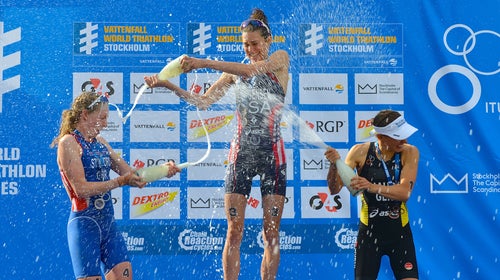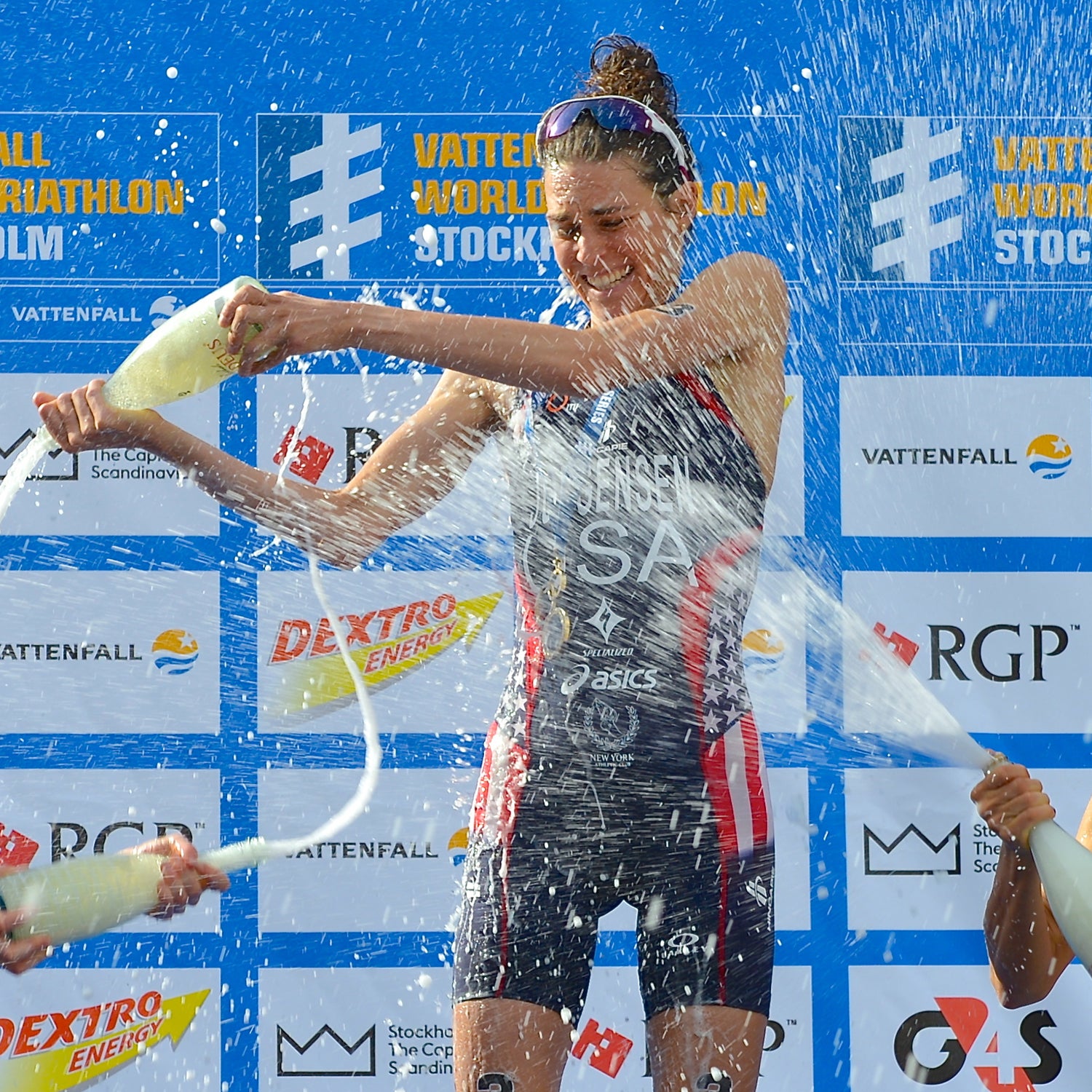Like most Taylor Swift songs, the Australian national anthem has gotten a lot of play. Between 1995 and 2005, a steady stream of Australian triathletes swam, biked, and ran their way to World Championship and Olympic Gold medals.┬áAnd they didnÔÇÖt stop there. AustraliaÔÇÖs triathletesÔÇöparticularly the womenÔÇöfrequently claimed all the podium spots and left athletes from other countries scrambling to finish in the top ten.┬áIt was a rare championship crowd that didnÔÇÖt hear Advance Australia Fair.
ÔÇťWe were able to work together,ÔÇŁ says , three-time world champion and Olympic gold medalist during that era.┬áÔÇťWhen one of us had a off day, someone else would step up and put their best foot forward for Australia.ÔÇŁ
But after a more than a decade of dominance, Australia hasnÔÇÖt had a man or woman on an ITU World Championship podium since 2010.┬áWhile the magnitude of the countryÔÇÖs previous success would be arguably hard to sustain, thereÔÇÖs one clear reason Australia has dropped off the radar: the country changed its approach to coaching.
In its heyday, understood that optimal athletic development┬árequires “the right coach, at the right time, in the right place,” says , performance director for USA Triathlon, and an Aussie. In other words, possessing important measurable physiological qualitiesÔÇöstrength, endurance, speedÔÇöisn't a guarantee of success at the elite level.┬áWithout the right┬ácoaching and environment to flourish,┬áendurance athletes may not realize their full potential.┬á
ÔÇťTraditional organizations sometimes lean too heavily on pure sport science,ÔÇŁ says Hall, ÔÇťthere are many important qualities developed by a good coach that are hard to quantify, yet are crucial for success.ÔÇŁ
Initially, Triathlon Australia provided peripheral support to athletes who were encouraged to stay in their home coaching settings. But after realizing success, Triathlon Australia shifted to a system that centralized its coaching and athlete development, a move which Hall believes was motivated by an increased focus on the quantifiable aspects of endurance performance, like power, aerobic capacity, and lactate threshold, despite an already successful model of coaching and training.┬áBringing the athletes to a common training center would allow them greater access to the latest technology and resources.┬á But like many ideas, what looked good on paper didnÔÇÖt work as well in practice.
ÔÇťTraditional organizations sometimes lean too heavily on pure sport science,ÔÇŁ says Hall, ÔÇťthere are many important qualities developed by a good coach that are hard to quantify, yet are crucial for success.ÔÇŁ┬áThese qualities, like perseverance, resilience, and a love for the training and racing process, can't be measured in a lab or analyzed on video. By centralizing training and discouraging athletes from using coaches outside of national training facilities, Triathlon Australia lost many of the coaches who had made the program successful. ┬á
For many of the triathletes in the Triathlon Australia program, the one size fits all philosophy of development and coaching didnÔÇÖt sit well.
Snowsill, one of AustraliaÔÇÖs most successful triathletes, came into the sport in the early 2000ÔÇÖs as part of Triathlon AustraliaÔÇÖs nascent centralized program.┬á She acknowledges this gave her access to top-notch facilities and allowed her to train side by side with AustraliaÔÇÖs other top triathletes, but she chafed under the tension and politics brought by the centralized system.┬á
ÔÇťMuch of the tension was created by rivalries between administrators or staff,ÔÇŁ said Snowsill.┬á ÔÇťBut unfortunately that stress trickled down to us and pretty soon you started looking at the woman one lane over in a more competitive way.ÔÇŁ
Jorgensen believes that the philosophy of ÔÇťright coach, right time, right placeÔÇŁ has guided her development as a triathlete.
Driven by the success of AustraliaÔÇÖs earlier top female triathletes, including ITU World Champ , and ITU and Ironman World Champ , Snowsill wanted the freedom to choose her own path, away from the constraints imposed by Triathlon Australia.┬áÔÇťIt was a risk to try it, but they couldnÔÇÖt argue with my results.ÔÇŁ Snowsill quickly┬áestablished herself as a force in Olympic distance racing, winning┬áthe ITU World Championship in 2003.
While Snowsill was able to flourish by choosing her own route, others of her generation of triathletes havenÔÇÖt been able to maintain AustraliaÔÇÖs dominance. Perhaps, Snowsill believes, thatÔÇÖs because success in triathlon is ultimately about the individual, unlike other endurance sports like crew that may benefit from centralized, team-focused training.┬áÔÇťWeÔÇÖre not truly a team sport,ÔÇŁ says Snowsill, ÔÇťAfter all only one person gets the medal.ÔÇŁ
In contrast, USA Triathlon has allowed its triathletes to develop at a speed and location specific to their needs as an athlete and individual. Triathlon Britain uses a similarly organized, decentralized system. Under this formula, USAT has developed its latest superstars, including 2014 ITU World Champion, , and silver medalist Sarah Groff. 
Jorgensen, for example, was approached by USA TriathlonÔÇÖs College Recruitment program after sheÔÇÖd graduated from the University of Wisconsin-Madison, where she competed on the swim and cross country teams, and had started working as a CPA for Ernst and Young. She was hesitant to embrace a new sport and tried to keep one foot in both camps.
ÔÇťIt was vital for me to be at home with my family, friends, and job at Ernst & Young when I started triathlon. I wasn't sure if I was fully ready or able to commit to triathlon full time,ÔÇŁ Jorgenson wrote ║┌┴¤│ď╣¤═° in an email.
Forcing her to move to Scottsdale or Colorado Springs or other USA Triathlon training centers might have pushed her from the sport and left Ernst and Young with one more accountant. 
A great coach gives the 20,000-foot view of training, and how to manage all the other factors that influence personal development.
Jorgensen believes that the philosophy of ÔÇťright coach, right time, right placeÔÇŁ has guided her development as a triathlete. She stayed in Madison where she clicked with coach Cindi Bannink, under whose tutelage she finished second at the 2011 London ITU World Championship Series, earning her a spot on the 2012 Olympic Triathlon Team.┬á
As Bernard Savage, Performance Director for Triathlon Australia since 2013, recognizes Triathlon Australia has made mistakes. ÔÇťWe didnÔÇÖt put enough emphasis on developing young athletes and making sure they had the right coaching and resources to progress in the sport.ÔÇŁ
Triathlon Australia is now going in the right direction and has shifted back to a model similar to that of USA Triathlon and Triathlon Britain: a de-centralized system that encourages individual coaching.┬áÔÇťIn general our philosophy is to work with the coach and the environment that the athlete is in,ÔÇŁ writes Savage in an email to ║┌┴¤│ď╣¤═°.┬á ÔÇťThis provides upskilling and development for the coach as well.ÔÇŁ┬á


